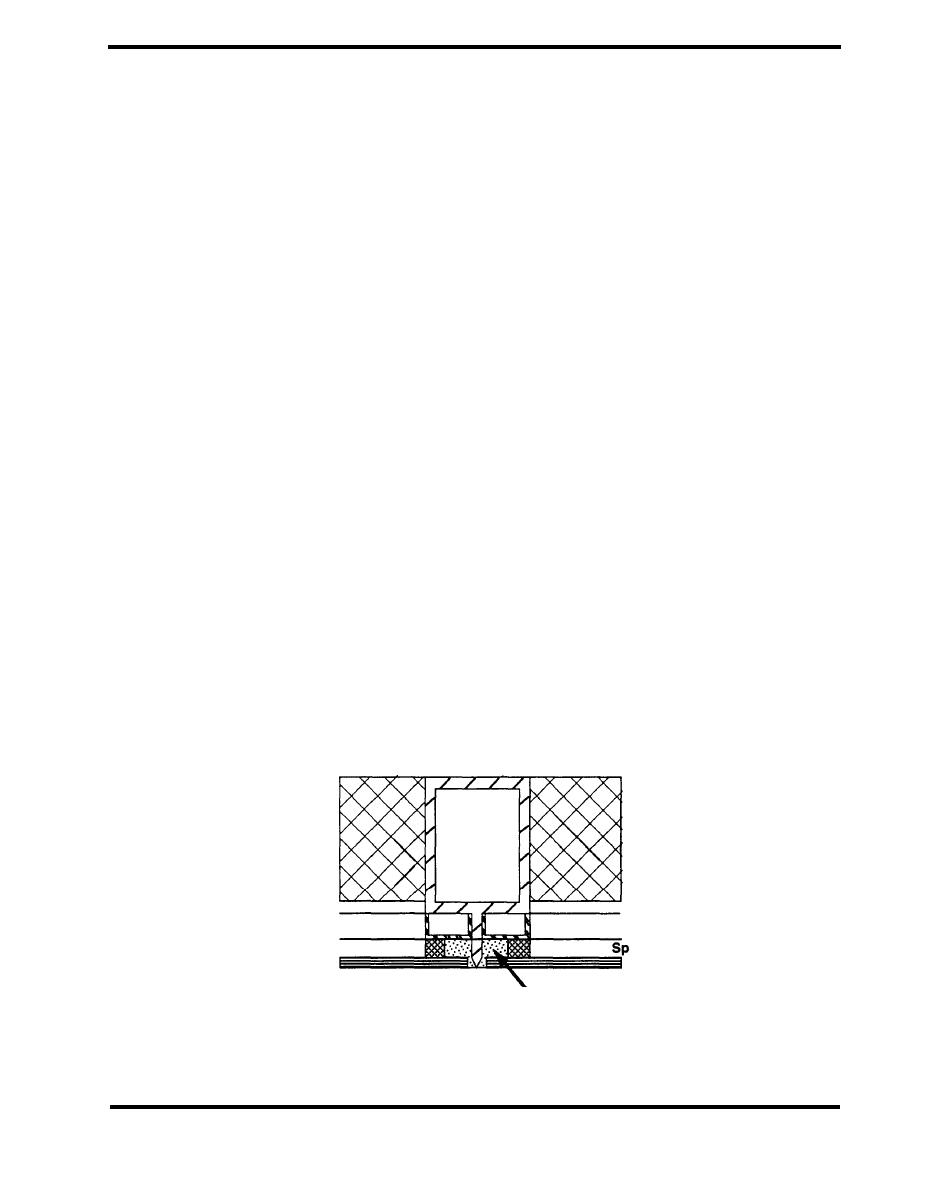
SYSTEMS/GLASS AND METAL CURTAIN WALLS
Most guidance on mullion design contained here and elsewhere concerns straightforward horizontal
sections and plans sections, and does not generally address more complex configurations. These
include intersections of horizontal and vertical mullions, doglegs and other transitions. The lack of
adequate design details for these complexities are a common source of performance problems due
to the unusual stresses and movements that occur at these locations. An adequate design must
include details for all mullions, intersections between mullions and locations where curtains walls
meet other envelope systems. Without the provision of design details for all locations, the
installation at these irregularities is left to the mechanic in the field.
A variety of alternate mullion designs have been developed to provide a thermal break while
meeting the structural performance requirements of these elements. Five alternative designs are
presented below: Structural or Stopless Glazing, Poured-in Place, Screw-on-Face with Snap-On
Cover, Internal Slide-In Spacer, and Structural Neoprene Gaskets
Structural Silicone Glazing
Structural or stopless systems are considered the best design for thermal performance since there
are no exposed mullion surfaces. As shown in Figure 4.1.3, both the vision and spandrel glass are
fixed to the metal support system with structural silicone adhesive sealant. The design of such a
system must insure that there are no exposed metal surfaces that will provide a thermal conduction
path from the exterior to the interior. In heating climates, a vapor retarder is sometimes applied to
the interior of the insulation to prevent condensation in the cavity behind the spandrel glass. For
this vapor retarder to be effective, it must also control air leakage from the building interior into the
space behind the spandrel panel. The application of the structural silicone requires great care with
regard to cleanliness, temperature conditions and curing without stress on the silicone. These
requirements lend this system to the factory assembly of large panels and on-site erection. ASTM
STP 1054 contains several articles on structural silicone glazing systems, though not from the
perspective of thermal performance. These articles cover design considerations, performance
properties of the adhesives, methods for calculating joint dimensions and other issues.
ACCEPTABLE
Insulation
andrel Panel
Structural Silicone
Figure 4.1.3 Structural Silicone Glazing
PAGE 4.1-3



 Previous Page
Previous Page
